Everything You Want to Know About Sustainable Disposable Packaging, But Are Afraid to Ask

Wow, what an exciting time!
Every day it seems there’s a new headline warning us about the plastics in the oceans, announcing new environmental legislature in the UK, or condemning a new item in our lunch bag (#banstraws). We at London Bio Packaging are chuffed to bits that the general public is taking such a passionate interest – it’s a tidal wave of positive momentum for the planet. In all the hubbub though, it seems there is still some confusion out there. We’ve received a flood of questions about sustainability and our packaging. So in attempts to cut through the noise and clarify some misunderstandings, we thought we’d gather all of those questions and put together a comprehensive collection of answers. Of course, we don’t claim to be the keeper of all knowledge or have an absolute claim to truth - some questions don’t even have answers yet - but we’ve provided our perspective as it stands today in attempt to arm you with good information and some follow-up questions to help you arrive at your own informed conclusions.
The way we see it, the better we all understand the facts, the better choices we can make, the better off our planet!
Here, then, are our exhaustively assembled responses to all of your questions - and then some. Or if you'd like to search for a specific question click here.
The media told me Plastic is the root of all evil…. don’t tell anyone I asked, but why is it so bad?
Ah, yes, that is the public opinion isn’t it! And there are absolutely many challenges when it comes to plastic. But we can’t fully demonize it and would never support a complete ban as we need to take a holistic look at plastic. What about blood bags and syringes in hospital? What about all the resulting food waste if we can’t wrap our food in plastic? This is to simply to say that at this point in our society, plastic enables us to live healthily, it enables us to have fresh food ready when we need it and facilitates vital life support in hospitals, and emergency services. So we can’t and shouldn’t yet completely ban plastics.
So when does plastic become an issue?
When plastic use is frivolous, when it’s not recycled, and when it is littered. There’s two sides to think about: the manufacturing of plastic and what happens in disposal. See, plastics are meant to endure – they are made from a finite resource, oil, and we all know that
the environmental impacts of extraction have already come under fire. Today most of the outrage comes around the disposal and litter side of things. Have you heard the claim that every piece of plastic you have ever used is still in existence? Whether or not that’s wholly true, the idea is right: plastics can take centuries to degrade. You’ve probably noticed the term ‘single-use plastics’ quite a bit. It’s all a part of our troublesome one-and-done throwaway culture. If you think about your everyday life and the amount of plastic you use only once and then immediately throw away it can be overwhelming – think plastic forks, grocery bags, food containers. Or what about the plastic you use for a month or so and then throw away – think toothbrushes, laundry detergent containers, hand soup dispensers. We use these items for seconds, but they can last a lifetime on our planet - it's irresponsible. But the worst is litter - don’t get us started on litter.
.
Please do get started – tell me why litter is so bad.
Litter in general is abhorrent – what’s more heartbreaking than seeing our beautiful planet contaminated by human rubbish? When you throw rubbish in the park or see someone fly-tipping a bin, the rubbish is no longer contained. It leaks into our environment: it’s in our parks, our water streams, our oceans, and therefore our food chain - if you can believe it, probably all of us have unknowingly ingested plastic.It’s killing species and endangering eco-systems. And that’s just how it impacts us in the UK – many other parts of the world have it much worse as litter disrupts water supplies and blocks water flow. Litter by all accounts is not sustainable. Not for our planet, not for our oceans, not for life on earth.
Remind me, why are plastics in the ocean bad?
Plastics in the ocean persist. Yes, they break down, but just into smaller pieces of micro plastics that damage the eco-system and enter the food chain. For example, turtles typically eat jellyfish, but sometimes that floating plastic bag looks a lot like a jellyfish. And so they mistakenly eat the plastic, it gets stuck in their intestines, blocks their system, and the turtle will starve to death. The turtle's body will rot away, but the bag will not. Instead, it is released back into the ocean and the vicious cycle begins again. It’s not just turtles; it’s birds, fish, dolphins, whales. Microplastics have also been found in plankton – thus entering the food chain from even the bottom rung. But it's not just the ocean we need to consider. Litter on our land is causing microplastics to enter even the land based food chain. And of course litter on land often gets washed into the sea…and the cycle starts all over again.
Okay I get it, plastic litter is dangerous. So give it to me straight – when it comes to disposable packaging, what’s the best thing for sustainability?
First and foremost, consider how you use your packaging – is it fit for purpose? Are you putting one napkin in the to-go bag or 10? Always encourage your customers to think again before grabbing their disposables. Otherwise, unfortunately there isn’t a simple answer today – but don’t worry we will help you figure it out. The quest for best is natural. By the same tack, a business’ attempt to claim the best is also equally natural. But, the reality is that it’s far more complicated in the UK and there is no unequivocal best when it comes to disposables in the UK. But there are better options. These are options that though not perfect are still fantastic progress for a more sustainable system. And not to mention that better also leaves room for continual improvement – we at London Bio Packaging would never settle for just best. So we say better, is wildly better than nothing, worst, and even best.
Okay, but what about that edible plate I saw on Facebook? Or that bottle that dissolves within seconds? Or those ‘recyclable cups' that those coffee chains use? Those seem like the best options to me!
Ah yes, we saw that edible plate too – looks…delicious? Today there are so many innovations that flood our newsfeeds. Seems like every week there’s a new cup claiming it’s truly the best, fully recyclable, and unlike every other cup! We think innovation is fantastic and should never, ever be discouraged. We also recommend taking a closer look and asking some questions: recyclable where and how? Is it widely recyclable or just within specific recycling programs? What about food contamination, would it still be recyclable after you drank the coffee? What is it made from, is it a sustainable source? When it comes to edible packaging though, we just wonder how sanitary that is…where has that plate been!?
Fine, makes sense. What about carbon calculations and lifecycle assessments? Shouldn’t those tell me that one is better than the rest?
Great question. Though there are a million and one ways to cut the cake and measure for ‘sustainability,’ the overall picture is the only one to look at – and it’s the hardest to measure.
Carbon calculations and lifecycle assessments can definitely help give a good indication of good or bad. However, they can also be terribly misleading and leave us asking a lot of questions. Especially in today’s world where we are more aware than ever of the impact of our littering culture, would knowing a product has a ‘good’ carbon calculation help us to know if it’s relative harmfulness to our oceans than another? From where do you start measuring and where do you end? Take one of our bagasse clamshell containers: some firms start measuring environmental impact at the planting of the sugar cane, others start at the manufacturing process. You can imagine, this leads to very different carbon calculation results, neither of these are wrong, but are either right? And how do you compare what’s not like for like? What’s worse: the amount of water used to grow the almonds for almond milk or the amount of methane produced by dairy cows? Can we ever really know?
We say learn as much as you can, keep asking good questions, remain critical when you see carbon numbers, and rely on your gut to make a decision about which environmental cause is most important to you. Oh, and another tip: don’t just focus on doing less bad, the more good you can contribute, the better off we all are!
Okay, so where does this leave me when it comes to seeking sustainable disposable packaging? How do I identify what’s better?
When you see claims that sound too good to be true, they often are. If anything claims to be the absolute best solution, now you know better than to take that as gospel.
At London Bio Packaging, we like to look at two main areas when evaluating a disposable’s sustainability: is it sustainably produced with sustainable materials and can it be sustainably disposed of or repurposed.
Is that what you sell?
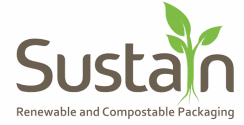
You guessed it! We aim to sell the most sustainable disposables out there – and that’s not always the same for every business. That’s why we sell two ranges of sustainable packaging so that you aren’t stuck with one option and can choose the road to sustainability that best suits your business. Both of our ranges look at both sides of the sustainability coin: Sustain™ which is made from renewable resources and is 100% commercially compostable, and Revive™ which is made with recycled material and is widely recyclable.
And which is better for the planet?
That depends on what waste disposal options are available in your business’ area! When it comes to disposables you have to think about the context as well. Both are made from what we consider more sustainable materials. On the disposal side of things, Revive™ might be better for some as in their area recycling infrastructure is better than the composting infrastructure. For others, Sustain™ might be the right choice because they are most interested in packaging made from renewable resources (plants). That's the better question isn't which is better, but which is better for you. It can be quite complicated, but don’t worry, check what your local waste collection can do and then speak to our team who can help you match what’s right for your business.
Wait, wait, wait. You just used a lot of words I hear a lot, but don’t really understand. Can you help clarify? Start with renewable resources.
Renewable resources are materials that can be, well, renewed. That means that once you take some for use, more can easily be replenished. So for example, our Sustain™ range is made from renewable resources like trees, corn-starch for bio-plastics, or crop by-products like sugarcane pulp - all sustainably grown and processed into the high-quality packaging you see in our shop. Read more about our packaging materials here.
By comparison, oil-based plastic is made from oil which is a finite resource – meaning, once we use the resource, there’s no getting it back. So, oil and other fossil fuels are limited.
To us, what’s important is that waste doesn’t get wasted. In other words, that it gets renewed into resource in one of two ways: composting or efficient and effective recycling.
Bio-plastic? Is that still a plastic?
There are some people that say yes, some that say no. For us it’s as simple as this: plastic is made from polymers manufactured from different sources. Bio-plastic (PLA) is made from polymers manufactured from a biological source (plants). It’s designed to look, feel, and act like a plastic, but with a few key differences. Instead of being made from finite recourses, it’s made from renewable resources and is 100% commercially compostable. So to us, bio-plastics are still technically plastics, but better for the environment than their fossil-fuel based cousins. In hopes of being completely clear and avoiding any confusion we call our bio-plastic products, “oil-based plastic free” or if we’re feeling clever “fossil fuel free!”
Hmm okay and recycled materials?
Recycled materials are simply materials that have been used before. You might have wondered what happens after you’ve done the good deed of dropping your plastic into the recycling bin? Well, depending on what type of plastic it is it might get down-cycled (recycled into a lower quality product) or up-cycled (recycled into the same product or one of equal quality). That’s why we love our Revive™ range so much: it’s made from the only plastics that can be upcycled back into food grade products (rPET mixed with PET). And what does that mean? That our Revive™ range is plastic bottles made from plastic bottles - read more here. How cool is that?
Actually you don’t need to explain recycling because it’s obvious: just drop it in the recycling bin and it gets turned into something else…right?
In theory, yes! But in reality, it’s actually a bit more complex. Though everything is technically recyclable, not everything is recycled – even if you pop it into the recycling bin. Beyond the limitations of recycling due to food contamination, recycling can be especially confusing because not all regions or boroughs will recycle the same things, bins aren’t always clear, and on top of that, different waste collectors ‘recycle’ different materials.
That seems…inefficient, why is the recycling landscape so fragmented?
Well this could be quite a long history lesson, but we’ll cut to the chase. In an ideal world, from Isle of Wight to the Old Man of Hoy we would be able to recycle the same materials. But when the UK waste services were deregulated in the 80s they became subject to market forces and waste became commercialised. Therefore, it allowed people to make money out of recycling - which is a good thing! So waste collectors collect waste that they believe they can sell. The challenge however is that it resulted in a system without a nationwide standard or collection system ensuring that all recyclable plastics are actually recycled. That’s where we are now which is not to say that things aren’t changing. People are waking up to this and solving this puzzle is in part why the Government is building their Waste and Resource Strategy. It is improving, but there is a long way to go.
So what does recyclable really mean then?
In our world, recyclable not only means that the materials which make a product could be disassembled, remodelled, and used again, but also means that the materials will be recycled as they are accepted for recycling across the UK. For example polyethylene terephthalate (PET) and rPET mentioned earlier are recycled throughout the UK, as is paper and cardboard. These are what we call ‘widely recyclable.
What about coffee cups? Shouldn’t these be easily recyclable because they’re made from paper?
All paper hot drinks cups have to have a waterproof lining to safely hold your drink. Though the cup is made from paper, the lining is typically made from the oil based plastic. The recycling challenge with coffee cups is to separate the inner lining from the paper cup so that the materials can be used again. Today, there are two dedicated paper cup recycling facilities in the UK, the main one is ACE. Rather excitingly the industry has recently invested in the ACE facility to try and make all plastic lined paper cups widely recyclable. Thanks to the industry’s investment, ACE now offers any waste management provider £55 a ton for coffee cups. This is a great start, but there’s a long way to go as we still need consistent, nationwide collection systems for that material.
And how do I know what is recyclable?
Well our friends at WRAP (the Waste and Resources Action Programme) have developed the colour coding system which you probably recognize called OPRL (On-Pack Recycling Label). And soon to come will be a system for labelling even disposable packaging with a consistent label scheme. Take a look at their Recycle Now website for loads of information on what to recycle, where, and how: https://www.recyclenow.com/local-recycling.
What about the recycle symbol with the number in it – doesn’t that tell me what I should recycle? #1 being the best?
You are referring to what are called plastic resin codes. Most plastics have one of these stamped into or written on them with a number inside. This identifies the type of plastic resin used to make the item – the numbers between 1 and 7 simply defines the resin used. So, despite common misconception, the numbers do not indicate whether something is more recyclable than the next – it’s simply a coded system. We recommend you read through this list of all symbols that refer to recyclability, it’s incredibly valuable: https://www.recyclenow.com/recycling-knowledge/packaging-symbols-explained.
So with all of these labeling systems we must be pretty good at recycling in the UK?
It definitely helps! And we guess it depends on how you define “pretty good.” Currently the UK produces 3.7m tonnes of plastic waste and only 29% is recycled and 56% is recovered. On the upside though, the UK has a target to recycle 57% of plastic by 2020. For us, that’s not quite good enough - we hope we can all blow that target out of the water! So, we’ve got a lot of work to do.
Well that’s depressing. Is there any hope?
It’s only depressing if you want to look at it that way – of course there’s hope! The great news is that the Government is investing in recycling. There are more and more products being made from recycled materials which gives plastic a value. If consumers and businesses like you continue choosing products made from recycled materials or that are recyclable (and wherever possible, both!), then we really will start to look like a circular economy.
What’s a circular economy?
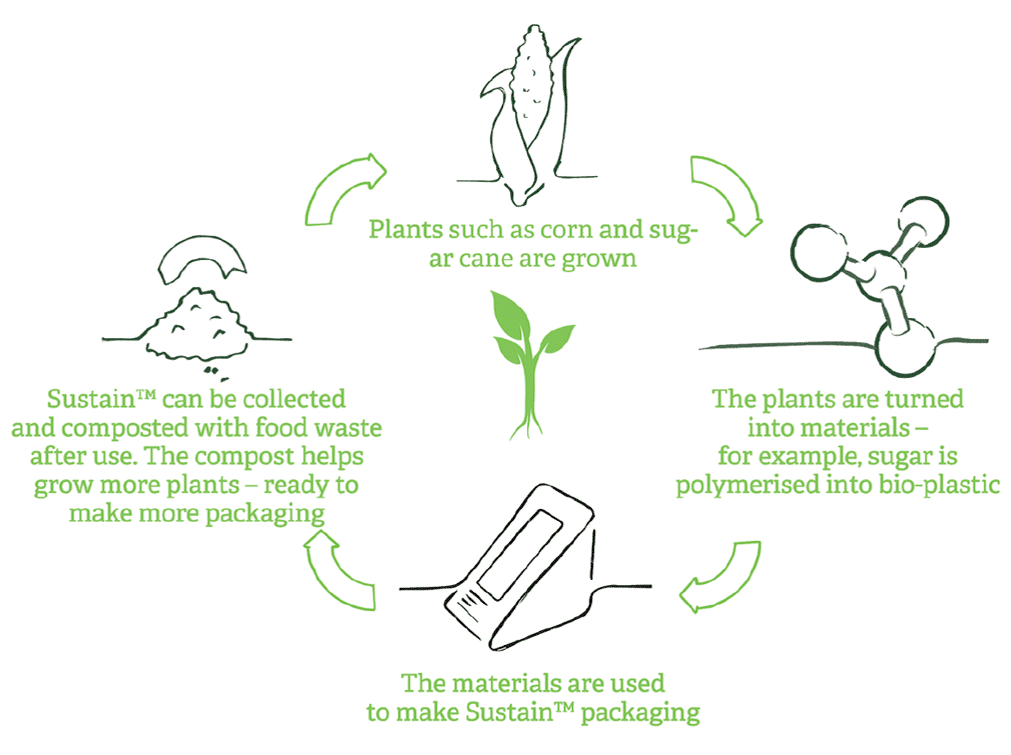
It is an alternative to a traditional linear economy (make, use, dispose) in which we keep resources in use for as long as possible, extract the maximum value from them whilst in use, then recover and regenerate products and materials at the end of each service life. Composting is also an excellent example of how a circular economy could come into play.
We recommend this highly informative and entertaining video to get a good grasp: The Story of Stuff.
Well. That sure puts things into perspective – I want a circular economy for the UK!
Great – we do, too!
But wait, is composting different from recycling?
Interestingly, under the European Waste Directive composting is also classed as recycling. But don’t let that confuse you: if you drop something that’s marked “compostable” into the recycling bin, more often than not it cannot be recycled. To use the two terms interchangeably is, in our opinion, intentionally misleading and serves to confuse a space that is already confused. So, when it comes to composability, we prefer to use the terms composting, compostable, compost for compostable.
Makes sense. But…what does being compostable even mean?
In general, compostable materials are materials which biodegrade in a composting process through the action of naturally occurring micro-organisms within a specified timeframe.
For us, when we say a product is compostable we mean it has been certified to standard EN13432 or equivalent which certifies that the material in question will decompose in an industrial/commercial composting facility within 12 weeks. And specifically, the resultant compost will be used to grow more plants and is ideally PAS100 compliant. Another type of compostability is home compostable which means you can pop something into your home compost system with your personal food waste and gardening scraps, and it will eventually break down into that nutrient dense mulch that you can use in your garden or in larger agricultural sites.
So will your products break down in the composting bin I have in my garden?
No, our products in the Sustain™ range are industrially compostable, not home compostable.
They should get binned with food waste and other commercially compostable materials. To be commercially compostable means that a product will degrade into compost only under very specific and rigid criteria which are created in a commercial facility including heating the materials to certain temperature. During composting, compostable products will break down into carbon dioxide (CO2), water, inorganic compounds and biomass which leaves no visible contaminants or toxic residue/substances. After this process, the waste is turned into a nutrient dense mulch ideal for growing of more plants. Again, for a product to be called commercially compostable, it must be certified to EN13432 or its equivalent.
Okay, I got it, I’ll look out for EN13432. Is that the only certification I should know about?
Actually there are quite a few certifications that you might want to familiarize yourself with as unless certified to one of the below standards or to an international equivalent (ASTM D 6400), a product and packaging item cannot be assumed to be compostable:
EN 13432:2000 for packaging. This is the European standard which certifies that packaging will compost through industrial, commercial composting within 12 weeks. Products certified as such will have under gone testing and met evaluation criteria. This standard comes under the European Directive on Packaging and Packaging Waste (94/62/EC) and has been translated and implemented in all the European Member States.
EN 14995:2006 for plastics used in wider applications than packaging. This standard is similar to EN13432 above but includes plastics used in non-packaging applications.
PAS 100: The Publicly Available Specification 100 (BSI PAS 100) is a specification that denotes a quality standard for compost. So in an ideal world our EN 13432 certified packaging will become part of PAS 100 compost.
You keep saying commercial composter. What is that? What kind of commercial composting facility do they need to go to?
Great question. To get composted properly, our packaging along with food waste needs to get sent to a licensed In Vessel Composter, or IVC for short. This is where the compostable packaging, food and garden waste is repeatedly super-heated, breaking the materials down and mixed together to create a nutrient
Rich compost, suitable for supporting our country’s crop production.
We have two main types of commercial composting in the UK. The first is IVC, the second is Anaerobic Digestion, or AD for short. This is where the food and garden waste is broken down by microorganisms in an oxygen free environment. The biogas these little critters produce as they are munching through the food and garden waste is harvested as energy. The final product left over once these guys have worked their magic is the compost. However, it is really important to know that these microorganisms do not like packaging, and so our compostable packaging should not be sent to an AD composting facility.
What about biodegradable? Are your products biodegradable? Is that the same as compostable?
Ahhh, you’ve picked up on one of the most confusing distinctions in our industry: biodegradable vs. compostable. Even we get tripped up sometimes! Biodegradable simply means that a material or product is created from biological sources, such as paper or plants, and will break down into something over time. What biodegradable does not tell you is what that material or product will break down into and how long it will take. Some biodegradable products are actually harmful to the environment because they break down into micro-plastics! Compostables on the other hand will not create harmful micro-plastics when they get broken down and have a very specific and certified time-limit: they break down with food waste into nutrient dense compost in a commercial composter within 12-weeks. Remember, all compostable products are inherently biodegradable as they are created from biological sources and will break down. However, not all biodegradable products are compostable. We are pro-compostables and always encourage customers to do their due diligence on any products that only claim to be biodegradable.
But aren’t biodegradable products good for the environment?
Not necessarily. Don’t be fooled, biodegradable doesn’t necessarily always equal sustainable. When marketing materials use the term “biodegradable” we encourage you to ask more questions: after how long? In what environments? What will it break down into? Will it break down into environmentally beneficial materials? We would never encourage a biodegradable only product. It’s why we sell compostable products which have certified answers to these questions: after 12-weeks, in a commercial composting facility, into nutrient dense compost with food waste, and yep – great for growing more plants.
To be clear: if packaging is compostable, does that mean if I plant it in my garden I can watch it dissolve?
No. It means it can break down in a commercial composting facility within 12-weeks. Any packaging that claims to dissolve or biodegrade in your garden should trigger some scepticism and warrant some serious research.
What about if I throw it in the park?
No way! First of all, littering is littering – don’t do it ever! And again, compostability in packaging means it can break down in a commercial composting facility. If anyone tells you it can naturally break down in the park or your garden in a few weeks,
What about if I drop it in the ocean? Maybe water helps to break it down?
No, no, no. These products are designed to break down only within the commercial composting facilities. Even if it did break down in water (which it doesn’t!), there is never an excuse to litter.
But shouldn’t you sell products that dissolve in nature – surely that would be a better product?
We believe that creating products that break down in our oceans or parks is sidestepping the issue completely. We don’t want to look for an excuse to litter, we want to eliminate litter completely! Thus we ask you a question in return: shouldn’t we be seeking ways to eliminate rubbish seeping into nature altogether? Our products are meant to be a solution to eliminating the concept of packaging waste entirely. If after use, Sustain™ lives its purpose of becoming compost and Revive™ becomes recycled material, well, that’d result in no packaging waste at all! Eureka! This concept is known as the circular economy in which all products and materials are used and reused indefinitely. No extraction. No waste. No litter. No problem!
Okay fine. So what does actually happen to your Sustain™ products if they do end up in the ocean?
They stay there. It’s a problem. We don’t like it. And it’s the same when we litter the land with anything. Our Sustain™ products however are not designed to end up in the natural environment and not even in a landfill. They are designed for a very specific waste stream for a very specific end of life: Sustain™ should get commercially composted to become a valuable resource after use, not just a one-and-done-forever material.
And why doesn’t that happen then? Why are we suffering such a litter problem?
The problem is two-fold: the waste infrastructure and people’s behaviour. How often do we see bins overflowing with rubbish? But at the same time, how many of us keep walking to find the next available bin?
Did you know that 61% of Britons litter? Unfortunately for too long waste has been a case of out of sight out of mind. We don’t always tend to think about the consequences when we throw things away. So too many of us don’t take the time to dispose of products in the correct bin. Here in the UK and particularly when compared to our continental neighbours we are only just beginning to rationalise the waste infrastructure.
Right now in the UK, what happens to your waste depends on which local author your waste collection comes under and on which waste collector. For example a resident on Oxford Street in London may have their glass waste collected by the local authority, but the ground floor restaurant underneath may not be able to recycle glass with their ‘waste provider’ – seems pretty crazy, huh? That’s why we offer two ranges to help you match your waste stream to your packaging.
There’s also a need for proper binfrastructre. We feel recycling signs could be less confusing, there could be more bins, and collection could be better. Lots of room for progress!
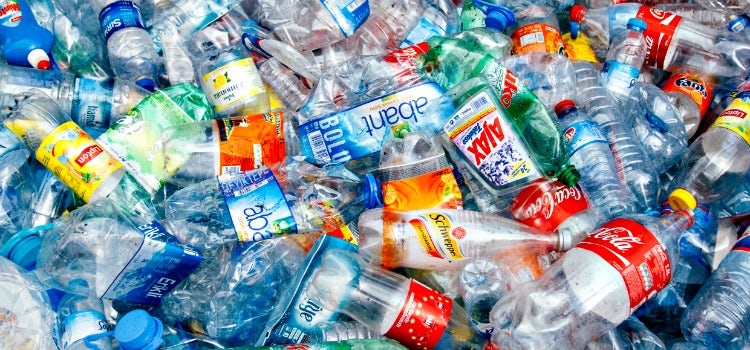

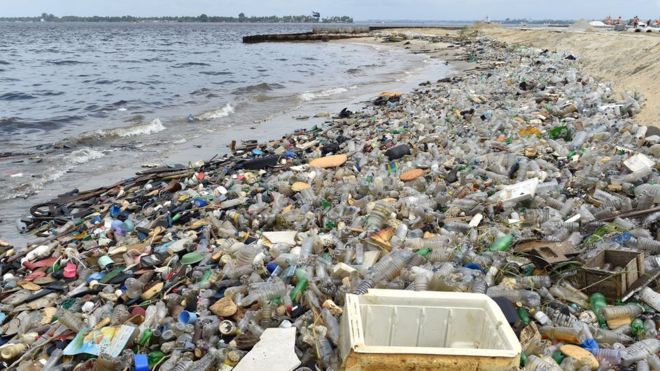


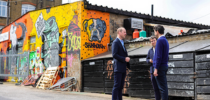

Leave a comment